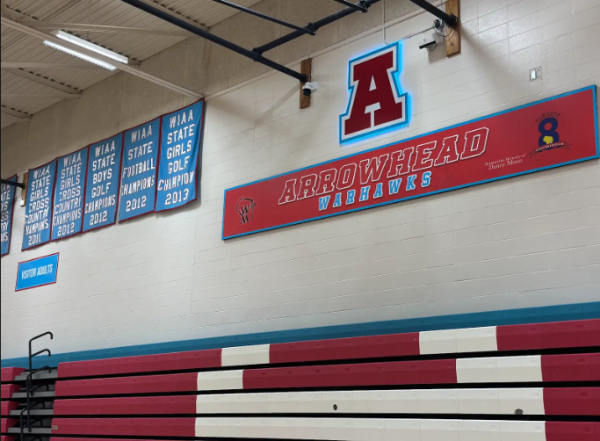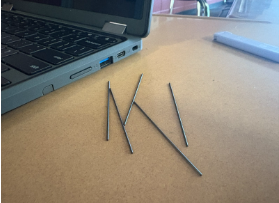Physics Classes Announce Annual Field Trip to Six Flags
The Great America field trip for physics this year is on May 22nd, which is an A day. Busses will leave at 8:00 a.m. and will return to Arrowhead at about 6:30 p.m. The trip costs $35 for the ticket, $13 for the bus, $48 in total. This is not a mandatory field trip although it is encourage all physics students attend.
Students will be missing the whole day of school and are responsible to make up their work on their own time.
Students in physics got a gold card to be signed by each teacher to get permission for their absence May 22nd. The cards have to be signed by every teacher the student has class with May 22nd.
Arrowhead physics teacher Chad Tschanz says, “The purpose of the Great America field trip is to apply mechanics concepts to answer a research question about a roller coaster. Students who do not attend are encouraged to apply mechanics concepts to answer a research question which peaks their curiosity. Often this is related to athletics or outdoor activities. For example, two students once studied how much mechanical work is done by a hitter to hit a home run. Other students have gone to a playground to study the mechanics or merry-go-rounds, swings, or slides.”
Arrowhead physics teacher Brian Corry says, “Students attending the field trip (approximately 400 students from grades 10-12) will not be in class that day.”
Arrowhead physics teacher Tschanz says, “Students who attend the trip collect data to answer a research question related to the mechanics of a roller coaster. The data collection may involve measuring angle(s) of incline, taking videos for video analysis, triangulating height(s), measuring dimensions of roller coasters, timing drops down inclines, or taking photos for photo analysis. Students who do well on the research project scrutinize their data collection procedures and the quality of the data collected while they are at the park. The Physics teachers want students to think to themselves, “Is the data I collected reasonable? Will I be able to use it to accurately and completely analyze the mechanics of the roller coaster? How do motion changes, forces exerted, and energy changes relate to the experience on the ride?”
Tschanz says, “I think the trip is always fun for students. To be honest, the rides make me a little nauseous, but I still go on a few with other teachers. From an educational perspective, this trip is the culmination of students’ in-depth studies of forces, motion, and energy in Physics. Students also learn about lab skills and data analysis in Physics. The Great America trip allows the Physics teachers to assess students’ ability to properly apply mechanics principles to real scenarios and scrutinize data for accuracy and uncertainty.”
Students will be taking a bus with their classmates, teachers, and chaperones to ensure safety. The Six Flags the [physics classes are going to in the Six Flags in Gurnee Illinois, which is approximately an hour and 20 minute drive. Six Flags offers many roller coaster rides and water rides.
According to teachengineering.org, a STEM website for teachers and students, “The underlying principle of all roller coasters is the law of conservation of energy, which describes how energy can neither be lost nor created; energy is only transferred from one form to another. In roller coasters, the two forms of energy that are most important are gravitational potential energy and kinetic energy. Gravitational potential energy is the energy that an object has because of its height and is equal to the object’s mass multiplied by its height multiplied by the gravitational constant (PE = mgh). Gravitational potential energy is greatest at the highest point of a roller coaster and least at the lowest point. Kinetic energy is energy an object has because of its motion and is equal to one-half multiplied by the mass of an object multiplied by its velocity squared (KE = 1/2 mv2). Kinetic energy is greatest at the lowest point of a roller coaster and least at the highest point. Potential and kinetic energy can be exchanged for one another, so at certain points the cars of a roller coaster may have just potential energy (at the top of the first hill), just kinetic energy (at the lowest point) or some combination of kinetic and potential energy (at all other points).”
According to the article The Science of Roller Coasters by Tom Harris, a physicist, “The purpose of the coaster’s initial ascent is to build up a sort of reservoir of potential energy. The concept of potential energy, often referred to as energy of position, is very simple: As the coaster gets higher in the air, gravity can pull it down a greater distance. You experience this phenomenon all the time — think about driving your car, riding your bike or pulling your sled to the top of a big hill. The potential energy you build going up the hill can be released as kinetic energy — the energy of motion that takes you down the hill.”





